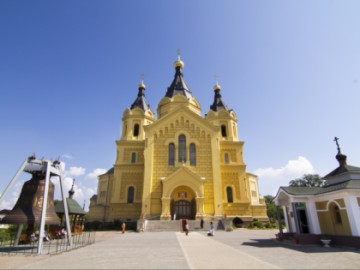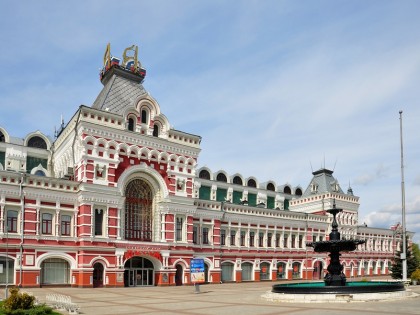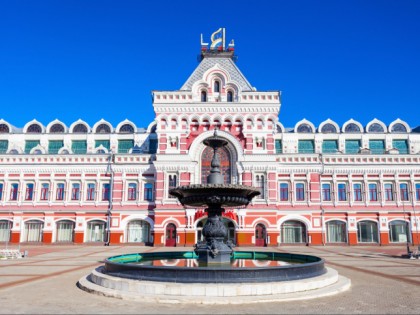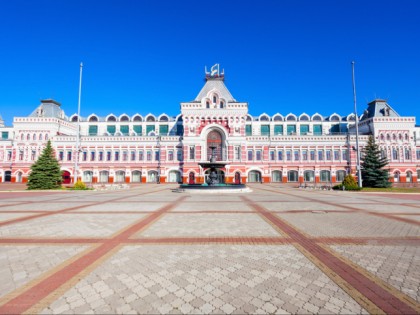Nizhny Novgorod Fair - the most famous in Russia
Nizhny Novgorod Fair is the most famous fair in Russia. Its history begins with Makarevskaya Fair, which was held in Nizhny Novgorod in the XIX century. Then it was the main trading platform of the country where prices for goods for the coming year were set. It was this fair that made Nizhny Novgorod "the pocket of Russia".
The Nizhny Novgorod Fair has always been called Makaryevskaya, since the original large Volga bargaining was not in Nizhny Novgorod but near the monastery of the Monk Makarii not far from the city. But in August 1816 the fair was destroyed by a fire, and so it was decided to move it to a more convenient place - to Nizhny Novgorod. Emperor Alexander the First then decided to redirect the funds allocated for the restructuring of the Winter Palace in St. Petersburg to build new trade fair pavilions. In 1822 Makarevskaya Fair resumed on the confluence of the Oka and Volga in Nizhny Novgorod. A courtyard in the style of classicism was built for the fair. In the future the territory of the fair was constantly increasing. New retail spaces, churches, theaters and a circus were added to it. It quickly became an all-Russian phenomenon. After the revolution of 1917 the fair was closed. During the Soviet times “Detskiy Mir” store (a store that sold children’s wear) was located in main building of the fair. In the 90 years of the twentieth century the tradition of holding fairs was revived but they no longer play a role in the life of the city and the state.




































